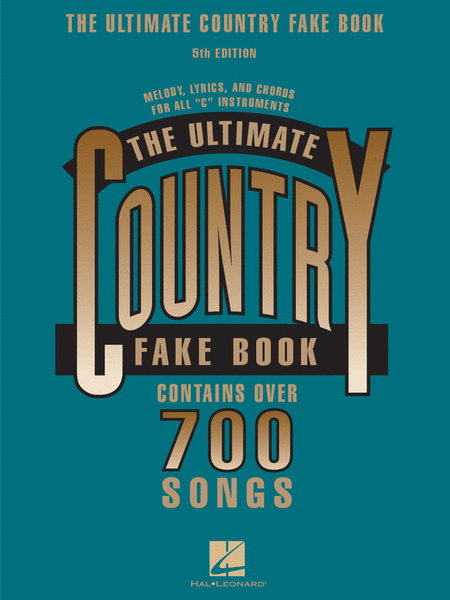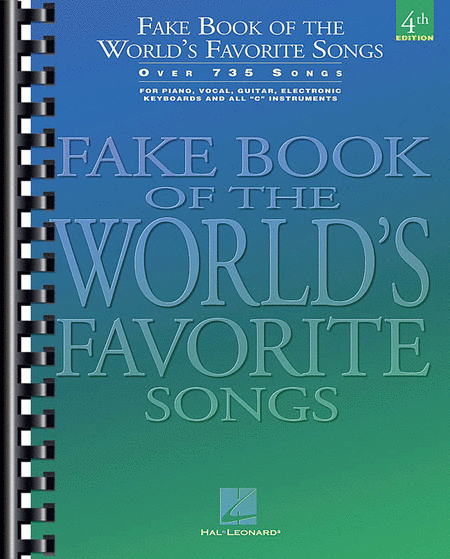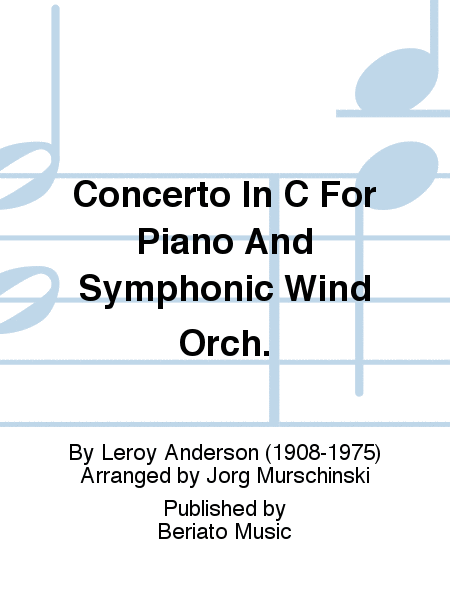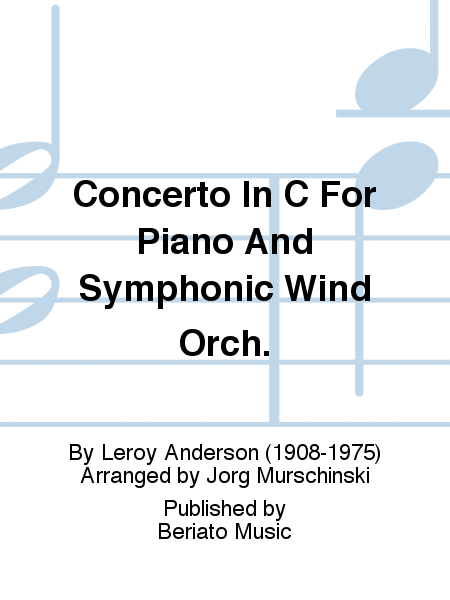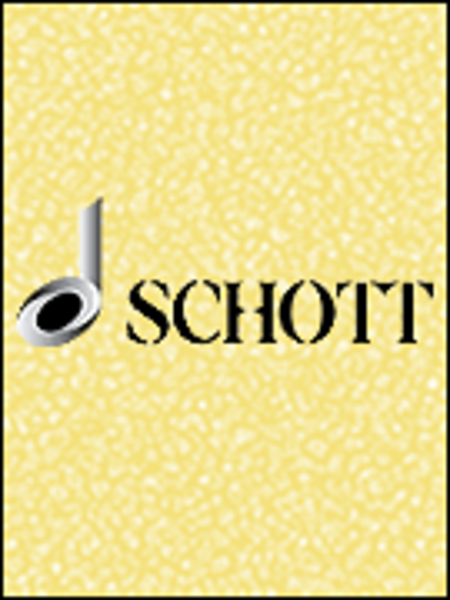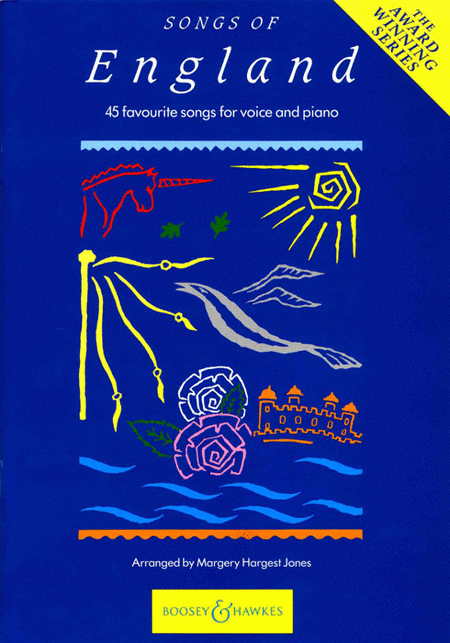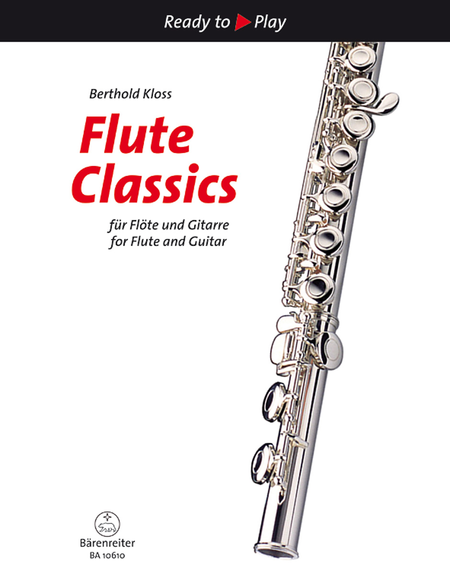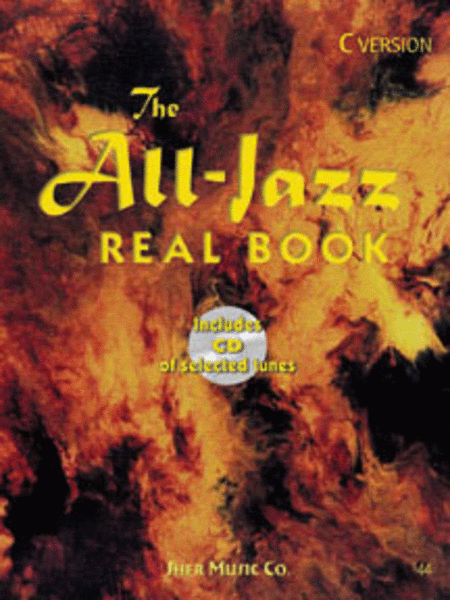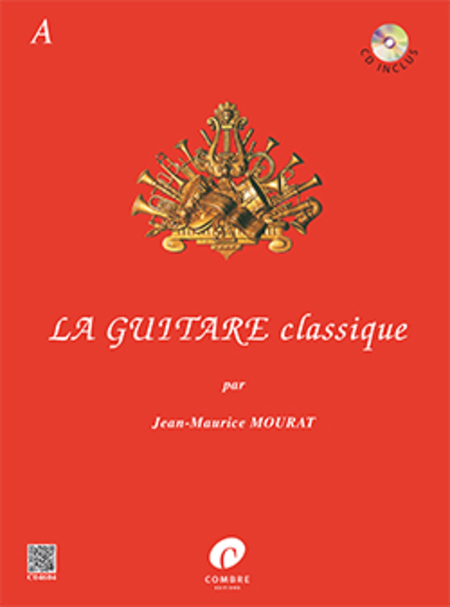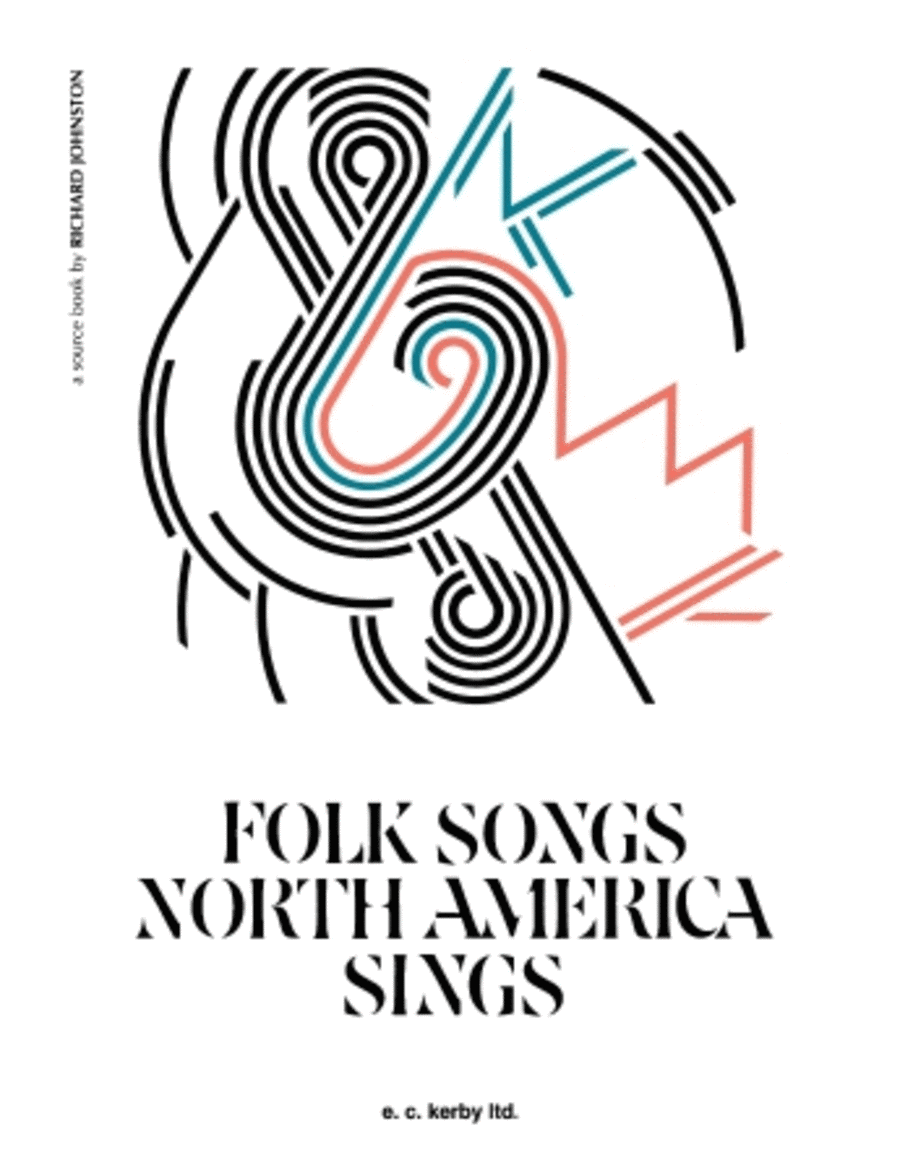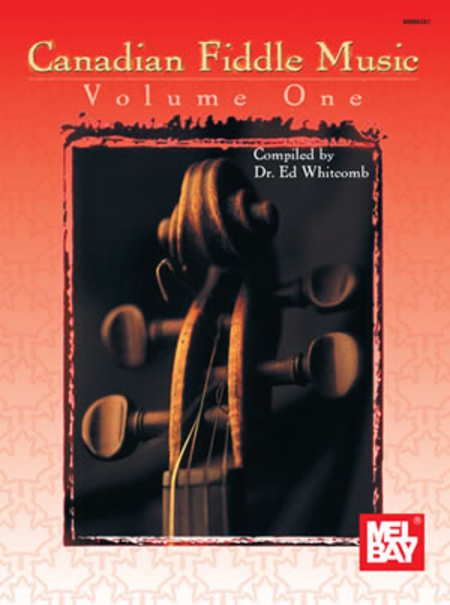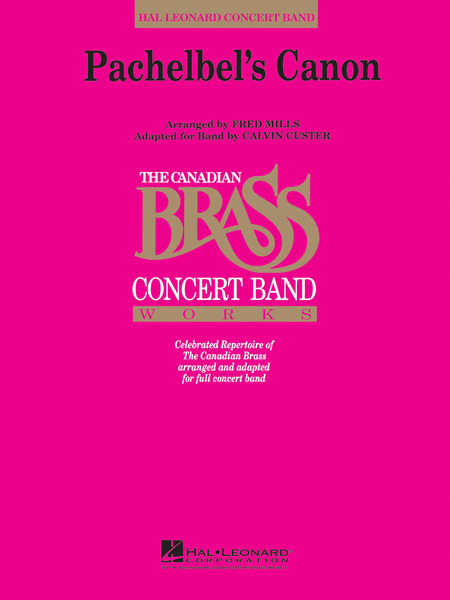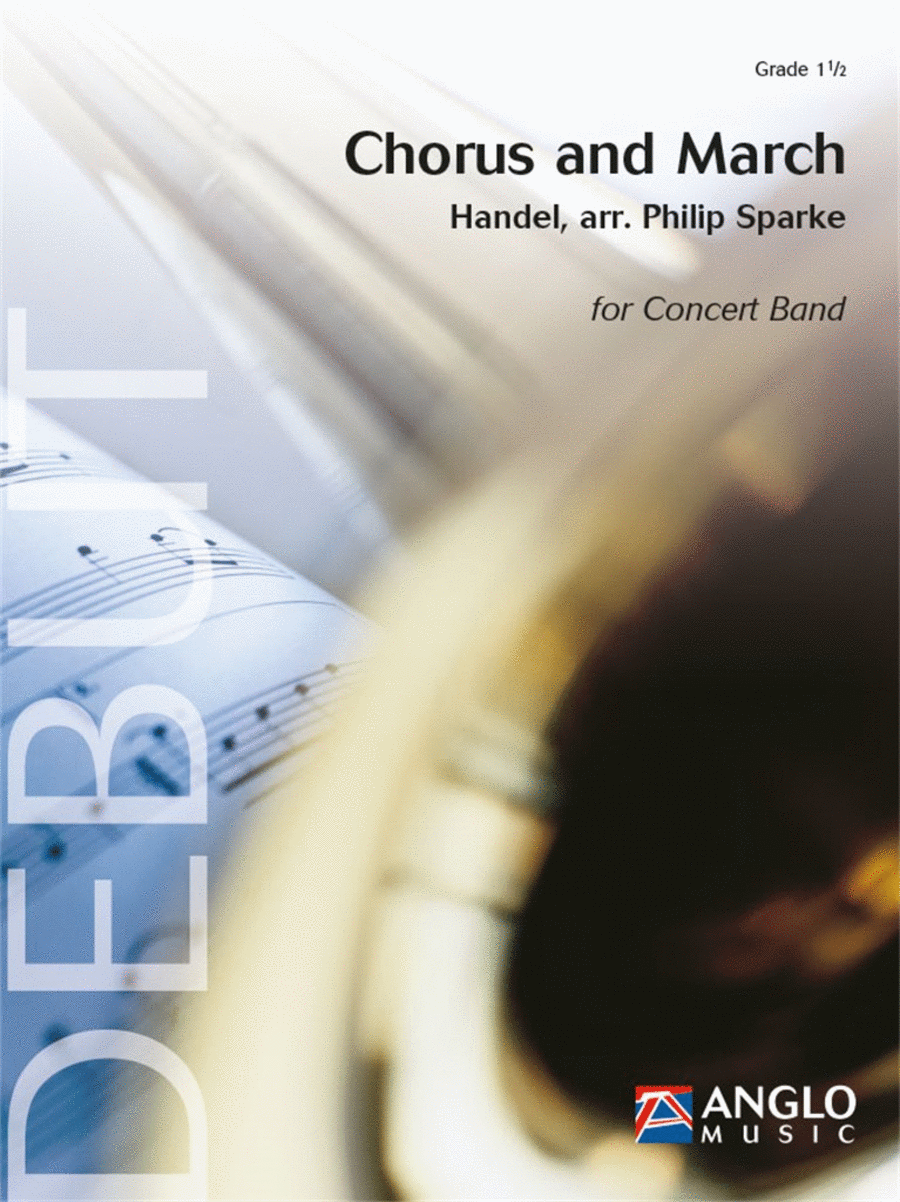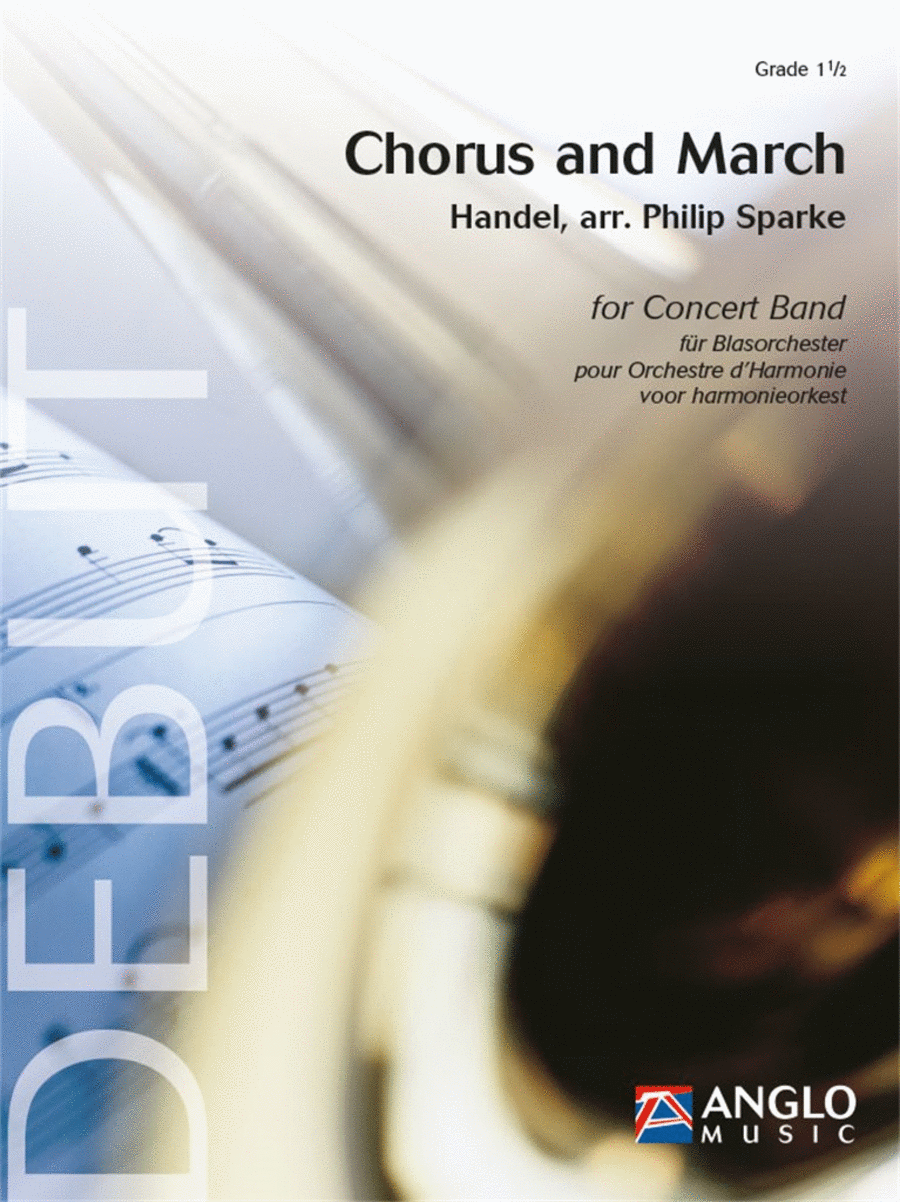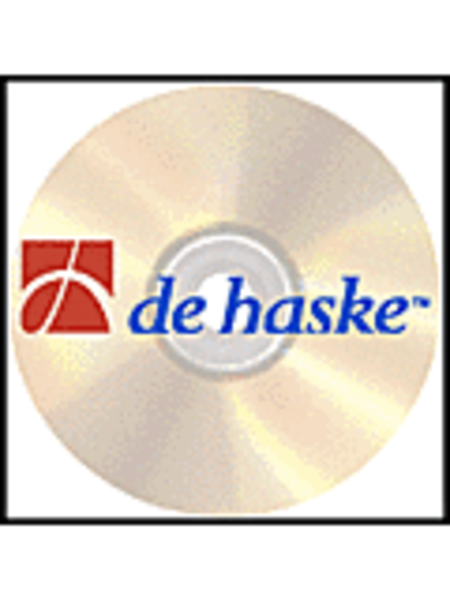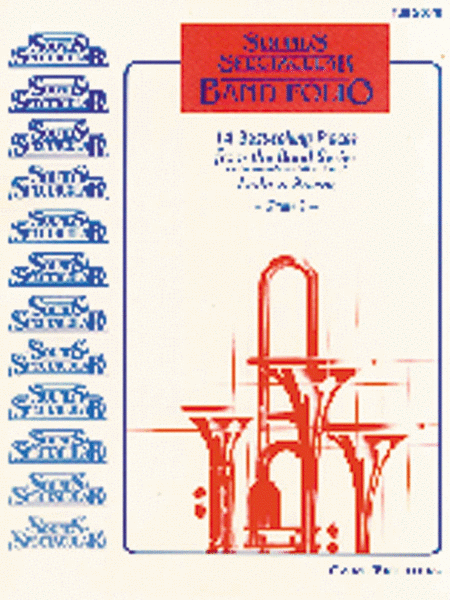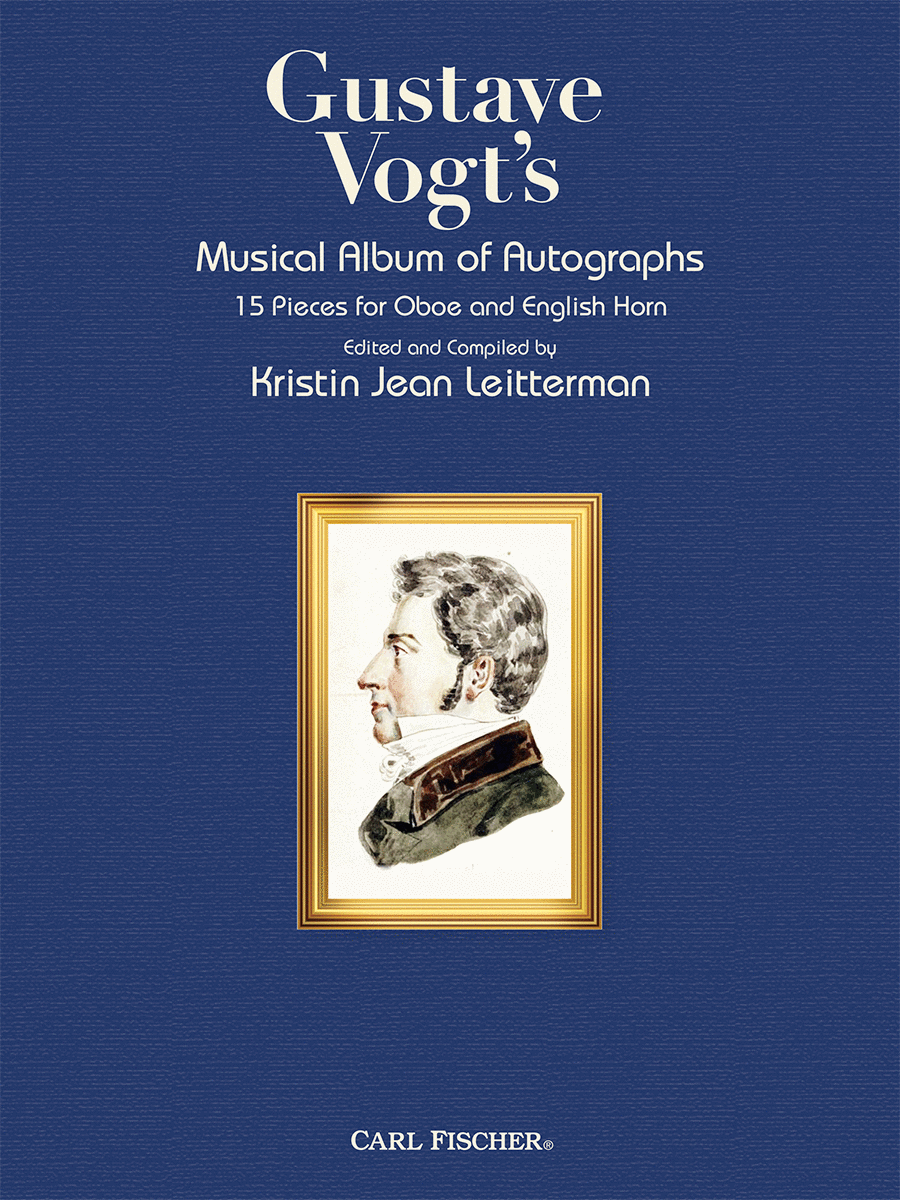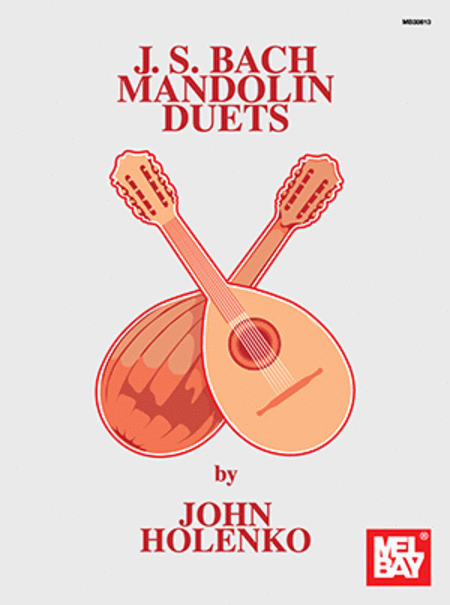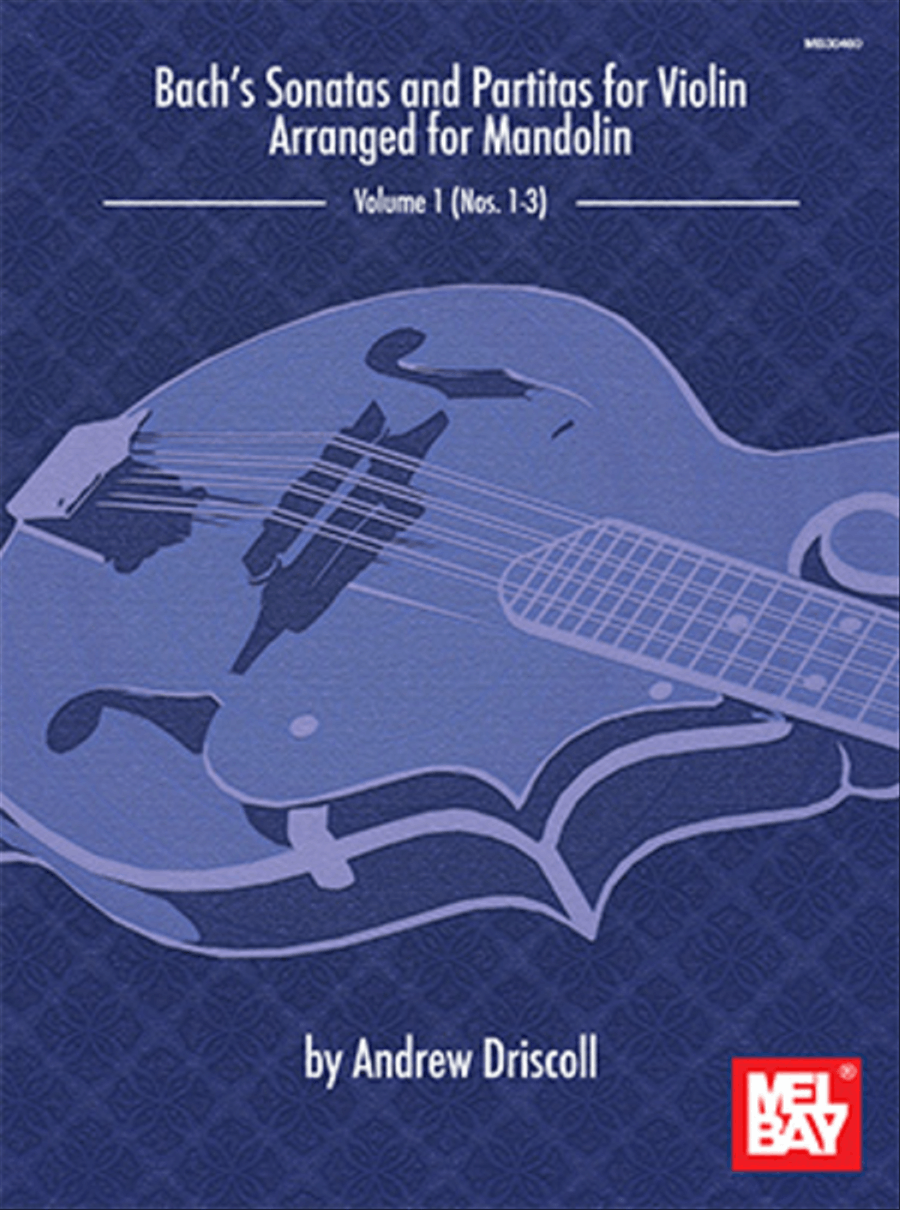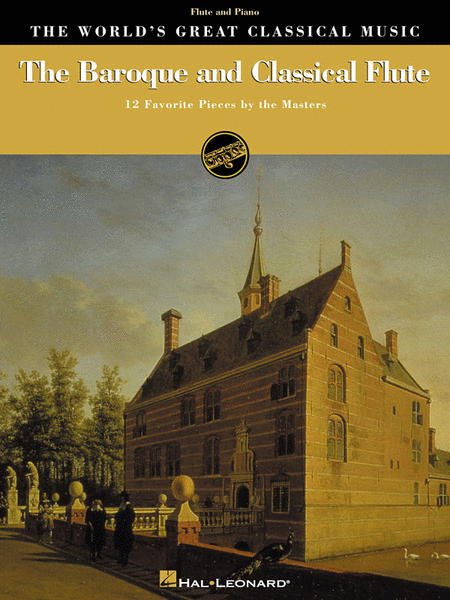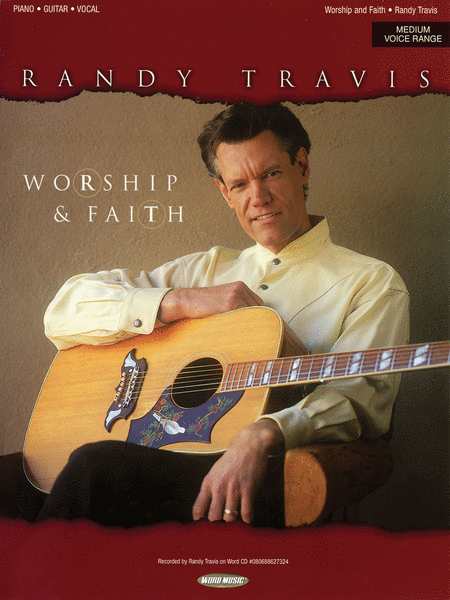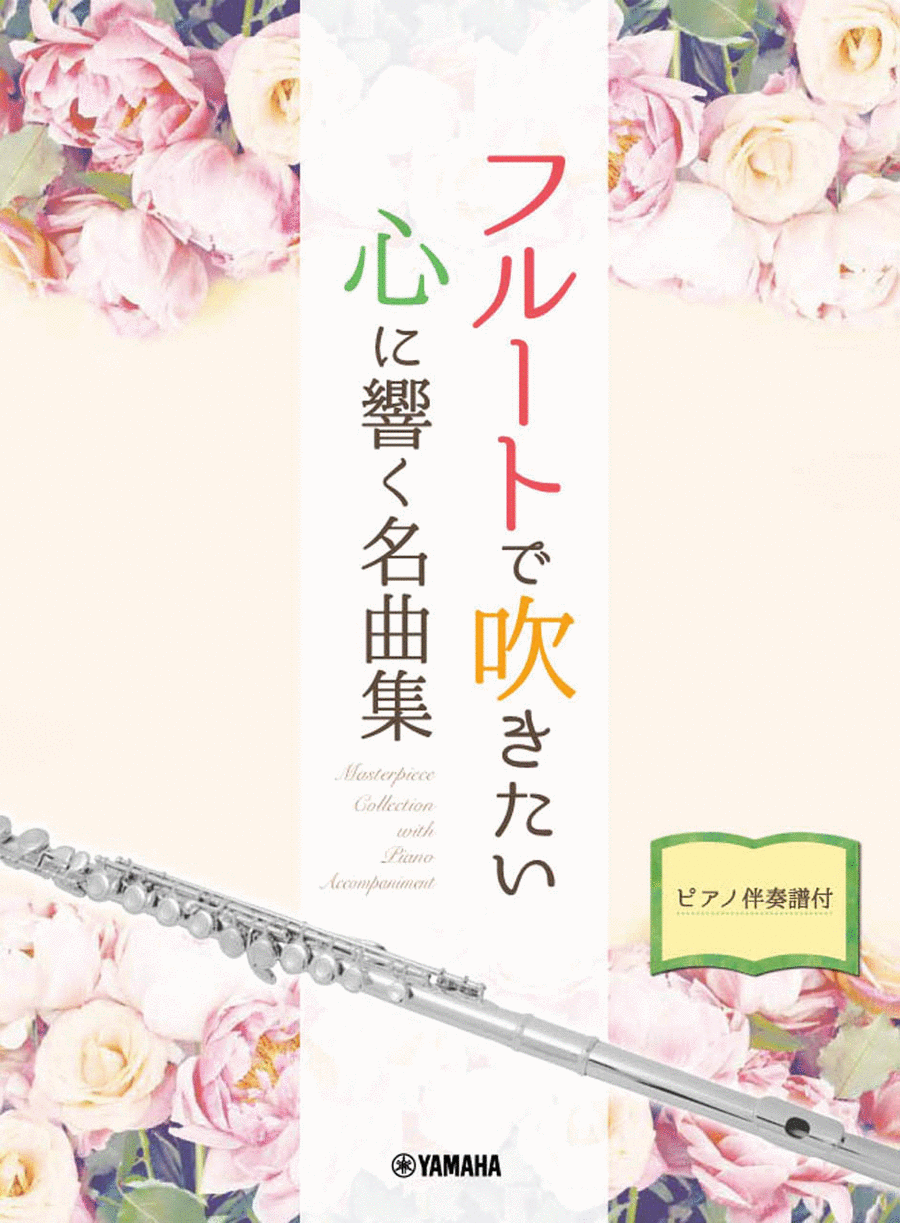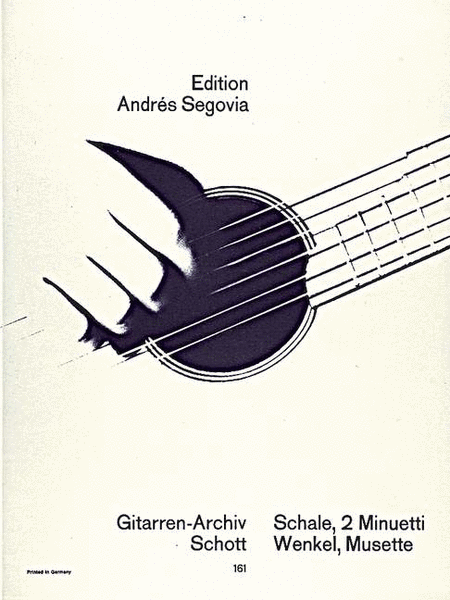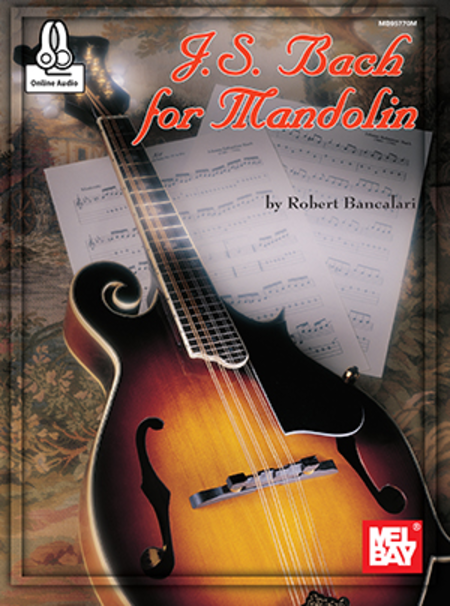|
| The Ultimate Country Fake Book - 4th Edition
Fake Book [Fake Book]
Hal Leonard
Fake Book (Includes melody line and chords). Size 9x12 inches. 568 pages. Publis...(+)
Fake Book (Includes
melody line and chords).
Size 9x12 inches. 568
pages. Published by Hal
Leonard.
(8)$55.00 - Voir plus => AcheterDélais: 24 hours - In Stock | | | |
| Fake Book Of The World's Favorite Songs - C Instruments - 4th Edition
Instruments en Do [Fake Book]
Hal Leonard
For voice and C instrument. Format: fakebook. With vocal melody, lyrics and chor...(+)
For voice and C
instrument. Format:
fakebook. With vocal
melody, lyrics and chord
names. Traditional pop
and vocal standards.
Series: Hal Leonard Fake
Books. 424 pages. 9x12
inches. Published by Hal
Leonard.
(14)$34.99 - Voir plus => AcheterDélais: 24 hours - In Stock | | | |
| Concerto In C For Piano And Symphonic Wind Orch.
Orchestre d'harmonie [Conducteur]
Beriato Music
Concert Band/Harmonie and Piano SKU: BT.BMP8095417 Composed by Leroy Ande...(+)
Concert Band/Harmonie and
Piano SKU:
BT.BMP8095417
Composed by Leroy
Anderson. Arranged by
Jörg Murschinski.
Score Only. Composed
2008. Beriato Music
#BMP8095417. Published by
Beriato Music
(BT.BMP8095417).
A lot is known
about the American
composer Leroy Anderson.
This son of Swedish
immigrants played the
piano, organ, accordion,
trombone, tuba and double
bass. He spoke several
languages fluently and
graduated from Harvard
with first-class
honours.While on military
service, the army also
commissioned him to write
a manual on Icelandic
grammar.He already
started writing musical
arrangements as a
student, and from his
30th year arranged and
composed for the Boston
Pops Orchestra. Such
melodiesas Serenata, The
Typewriter, Sleigh Ride
and Bugler�s
Holiday made him world
famous. His best-known
work, Blue Tango, reached
number one in the US
charts in 1952, and it
sold more than a million
copies. In 1975, a year
after hisdeath, he was
given a star at the Walk
of Fame in Hollywood.Most
of his works last no
longer than three
minutes, about the
maximum length of a
single at that time. One
work that lasts longer is
his 1953 Piano Concerto
in C for piano and
orchestra.The first
performance was in
Chicago, conducted by the
composer and with Eugene
List at the piano.
However, after three
performances he was no
longer happy with the
work and withdrew it. He
always intended to revise
it, but never got round
to it. Itwas only in 1989
that the Anderson family
decided to republish the
work.This three-part
composition is on the one
hand characterised by a
careless elegance, but on
the other one can hear
the influence of
Rachmaninoff, Copland,
Gershwin, and
evenBeethoven and Mozart,
as well as the Viennese
classics.Anderson used
the sonata form for the
first movement. It ends
with a cadenza that
carries us on into the
second part (in e minor).
The third part is a
typically cheerful
American folk dance in2/4
time, a so-called Hoe
Down, with a lilting,
lyrical passage as its
middle section. At the
end comes a solo passage
followed by a rapid
close.In this piano
concerto, Anderson
combines a rigidly
classical form of
composition with simple
andappealing themes and
elements from light
music. So this work is a
perfect synthesis of
light music and what is
called serious music, in
the same way as
Gershwin�s
Rhapsody in Blue. A work
that can be played
equally well in a
concerthall, at an
open-air concert or even
a pop
concert.
Over de
Amerikaanse componist
Leroy Anderson is veel
bekend. Deze zoon van
Zweedse immigranten
speelde piano, orgel,
accordeon, trombone, tuba
en contrabas. Hij sprak
vloeiend verschillende
talen en studeerde met
grote onderscheidingaf
aan Harvard en schreef
tijdens zijn legerdienst
in opdracht van het leger
een handboek grammatica
Ijslands.Al in zijn
studententijd begon hij
met het maken van
arrangementen, en vanaf
zijn 30ste arrangeerde en
componeerde hijvoor het
Boston Pops Orchestra.
Melodieën zoals
Serenata, The Typewriter,
Sleigh Ride en Bugler's
Holiday maakte hem
wereldberoemd. Zijn
bekendste werk Blue Tango
stond in 1952 op nummer
één in de VS
Charts, ener werden meer
dan een miljoen
exemplaren van verkocht.
Een jaar na zijn dood in
1975 kreeg hij een ster
op de Walk of Fame in
Hollywood.Zijn meeste
werken duren niet langer
dan drie minuten,
ongeveer de maximumduur
van een singletoen. Een
werk dat wel langer
duurt, is het
pianoconcerto in C voor
piano en orkest uit 1953.
Het werd in Chicago
gecreëerd onder zijn
leiding met Eugene List
aan de piano. Na drie
uitvoeringen echter, was
hij niet meer
tevredenover zijn werk en
trok dit terug. Hij had
zijn leven lang de
intentie het te herwerken
doch kwam er niet meer
toe. Pas in 1989 besliste
de Anderson Familie zijn
pianoconcerto toch
opnieuw uit te geven.Dit
driedelige werk
wordtenerzijds getypeerd
door een zorgeloze
elegantie, maar
anderzijds zijn invloeden
van Rachmaninoff,
Copland, Gerschwin en
zelfs Beethoven en Mozart
alsook de Weense
klassiekers te horen.Voor
de eerste beweging, past
Anderson de
sonatevormtoe. Op het
einde volgt een cadenza
die ons in het tweede
deel (in mi klein) voert.
Het derde deel is een
typische Amerikaanse,
vrolijke volksdans in
2/4, een zogenaamde Hoe
Down met als
middengedeelte een
zangerige,
lyrische
Ãœber
den amerikanischen
Komponisten Leroy
Anderson lässt sich
vieles berichten: Der
Sohn schwedischer
Immigranten spielte
Klavier, Orgel,
Akkordeon, Posaune, Tuba
und Kontrabass, sprach
neun Sprachen
fließend, absolvierte
mit
einemMagna-cum-laude-Absc
hluss die Harvard
Universität und
verfasste während
seiner Militärzeit im
Zweiten Weltkrieg für
die amerikanische Armee
eine Grammatik des
Isländischen. Schon
während seiner
Studentenzeit begann er
zu arrangieren, ab Mitte
der30er Jahre des letzten
Jahrhunderts arrangierte
und komponierte er für
das Boston Pops
Orchestra. Aus seiner
Feder stammen so bekannte
Werke der leichten Muse
wie Serenata, The
Typewriter, Sleigh Ride
oder Bugler�s
Holiday. Sein
wohlbekanntestes
Stück, Blue Tango,
wurde als erste
Instrumentalkomposition
über eine Million Mal
verkauft und belegte im
Jahr 1952 Platz 1 der
US-Charts. Für seine
Verdienste um die
Schallplattenindustrie
erhielt er ein Jahr nach
seinem Tod einenStern auf
dem Walk of Fame in
Hollywood.Charakteristisc
h für seine Werke ist
die Dauer: die meisten
sind rund drei Minuten
lang � mehr passte
nicht auf den damals
gebräuchlichen
Tonträger, eine
Singleschallplatte. Nur
wenige
seinerKompositionen
sprengen diesen
Zeitrahmen. Dazu
gehört sein Konzert
C-Dur für Klavier und
Orchester. Er komponierte
es 1953, die
Uraufführung fand
unter seiner Leitung und
mit Eugene List am
Klavier im selben Jahr in
Chicago statt. Da
Anderson mit demWerk aber
nicht zufrieden war, zog
er es im Sommer 1954,
nach nur drei
Aufführungen, wieder
ein. Er hatte zeitlebens
die Absicht, es zu
überarbeiten, allein,
es kam nicht mehr dazu.
Erst 1989 entschied sich
die Anderson-Familie
dazu, dasKlavierkonzert
wieder zu
veröffentlichen.Das
dreisätzige Werk zeigt
die Unbeschwertheit und
Eleganz, die Andersons
sämtliche
Kompositionen
auszeichnen. Dennoch
findet man darin auch
Anklänge an
Komponisten wie
Rachmaninoff, Copland,
Gershwin, undeben
Beethoven und Mozart,
sowie die Wiener
Klassiker. Der erste Satz
folgt der
Sonatenhauptsatzform. An
seinem Ende steht eine
Klavierkadenz, die direkt
in den langsamen zweiten
Satz (in e-Moll)
überleitet. Der dritte
Satz schließlich ist
einwaschechter Hoe Down,
ein fröhlicher
amerikanischer Volkstanz
im 2/4-Takt, in dessen
Zentrum aber eine
lyrisch-gesangliche
Passage steht. Eine
weitere Solo-Kadenz
führt das Werk in
einen spritzigen
Schlussabschnitt.In
seinem
Klavierkonzertvereinigt
Anderson einen
klassisch-traditionellen
Form- und
Kompositionsstil mit
Elementen der
Unterhaltungsmusik und
eingängigen Melodien,
die schon immer sein
Markenzeichen waren.
Daher bildet dieses Werk
eine perfekte Synthese
von ernster undleichter
Musik. Es passt �
wie beispielsweise auch
George Gershwins Rhapsody
in Blue �
gleichermaßen in einen
vornehmen Konzertsaal,
wie auch zur
zwanglos-lockeren
Atmosphäre einer
sommerlichen
Open-Air-Veranstaltung
oder
einesPops-Konzertes.
<
br>Nous savons beaucoup
de choses sur le
compositeur américain
Leroy Anderson. Ce fils
dimmigrants suédois
jouait du piano, de
lorgue, de laccordéon,
du trombone, du tuba et
de la contrebasse. Il
parlait couramment
plusieurs langues et
était diplômé
avec grande distinction
de Harvard. Pendant son
service militaire, il
écrivit un manuel de
grammaire islandaise
commandé par
larmée.Étudiant,
il avait déj
commencé faire des
arrangements et dès l
ge de 30 ans, il
arrangeait et composait
pour le Boston Pops
Orchestra. Des
mélodies telles que
Serenata, The Typewriter,
Sleigh Ride et Buglers
Holiday lui valurent une
renommée mondiale. Son
uvre phare, Blue Tango,
fut numéro un
descharts américains
en 1952 et se vendit plus
dun million dexemplaires.
Un an après sa mort en
1975, il eut droit son
étoile sur le Walk of
Fame Hollywood.La plupart
de ses uvres nexcèdent
pas trois minutes, soit
peu près la durée
maximale dun single
lépoque. Son concerto
en ut pour piano et
orchestre de 1953 est
quant lui plus long. Il
fut créé Chicago
sous sa direction avec
Eugene List au piano.
Après trois
exécutions, Anderson
nétait toutefois plus
satisfait de son travail
et le retira. Toute sa
vie, il eut lintention de
le remanier mais ne le
fit pas. Ce nest quen
1989 que la famille
Anderson décida de
tout de m?me
rééditer son
concerto pour piano.Cette
uvre en trois parties se
caractérise par son
élégance
nonchalante mais aussi
par linfluence de
Rachmaninoff, Copland,
Gershwin et m?me de
Beethoven et Mozart,
ainsi que des classiques
viennois.Pour le premier
mouvement, Anderson opte
pour une sonate. la fin,
une cadence nous conduit
la deuxième partie (en
mi mineur). La
troisième partie est
une danse populaire
joyeuse et typiquement
américaine en 2/4, une
Hoe Down avec un passage
lyrique et mélodieux
en son milieu. la fin, un
solo est suivi par une
clôture rapide.Dans
son concerto pour piano,
Anderson unit une
composition pure et
classique des thèmes
beaux et simples, sans
oublier des
éléments de la
musique légère.
Cette uvre. $38.95 - Voir plus => AcheterDélais: 4 to 6 weeks | | | |
| Concerto In C For Piano And Symphonic Wind Orch.
Orchestre d'harmonie [Conducteur et Parties séparées]
Beriato Music
Concert Band/Harmonie and Piano SKU: BT.BMP8091417 Composed by Leroy Ande...(+)
Concert Band/Harmonie and
Piano SKU:
BT.BMP8091417
Composed by Leroy
Anderson. Arranged by
Jörg Murschinski. Set
(Score & Parts). Composed
2008. Beriato Music
#BMP8091417. Published by
Beriato Music
(BT.BMP8091417).
A lot is known
about the American
composer Leroy Anderson.
This son of Swedish
immigrants played the
piano, organ, accordion,
trombone, tuba and double
bass. He spoke several
languages fluently and
graduated from Harvard
with first-class
honours.While on military
service, the army also
commissioned him to write
a manual on Icelandic
grammar.He already
started writing musical
arrangements as a
student, and from his
30th year arranged and
composed for the Boston
Pops Orchestra. Such
melodiesas Serenata, The
Typewriter, Sleigh Ride
and Bugler�s
Holiday made him world
famous. His best-known
work, Blue Tango, reached
number one in the US
charts in 1952, and it
sold more than a million
copies. In 1975, a year
after hisdeath, he was
given a star at the Walk
of Fame in Hollywood.Most
of his works last no
longer than three
minutes, about the
maximum length of a
single at that time. One
work that lasts longer is
his 1953 Piano Concerto
in C for piano and
orchestra.The first
performance was in
Chicago, conducted by the
composer and with Eugene
List at the piano.
However, after three
performances he was no
longer happy with the
work and withdrew it. He
always intended to revise
it, but never got round
to it. Itwas only in 1989
that the Anderson family
decided to republish the
work.This three-part
composition is on the one
hand characterised by a
careless elegance, but on
the other one can hear
the influence of
Rachmaninoff, Copland,
Gershwin, and
evenBeethoven and Mozart,
as well as the Viennese
classics.Anderson used
the sonata form for the
first movement. It ends
with a cadenza that
carries us on into the
second part (in e minor).
The third part is a
typically cheerful
American folk dance in2/4
time, a so-called Hoe
Down, with a lilting,
lyrical passage as its
middle section. At the
end comes a solo passage
followed by a rapid
close.In this piano
concerto, Anderson
combines a rigidly
classical form of
composition with simple
andappealing themes and
elements from light
music. So this work is a
perfect synthesis of
light music and what is
called serious music, in
the same way as
Gershwin�s
Rhapsody in Blue. A work
that can be played
equally well in a
concerthall, at an
open-air concert or even
a pop
concert.
Over de
Amerikaanse componist
Leroy Anderson is veel
bekend. Deze zoon van
Zweedse immigranten
speelde piano, orgel,
accordeon, trombone, tuba
en contrabas. Hij sprak
vloeiend verschillende
talen en studeerde met
grote onderscheidingaf
aan Harvard en schreef
tijdens zijn legerdienst
in opdracht van het leger
een handboek grammatica
Ijslands.Al in zijn
studententijd begon hij
met het maken van
arrangementen, en vanaf
zijn 30ste arrangeerde en
componeerde hijvoor het
Boston Pops Orchestra.
Melodieën zoals
Serenata, The Typewriter,
Sleigh Ride en Bugler's
Holiday maakte hem
wereldberoemd. Zijn
bekendste werk Blue Tango
stond in 1952 op nummer
één in de VS
Charts, ener werden meer
dan een miljoen
exemplaren van verkocht.
Een jaar na zijn dood in
1975 kreeg hij een ster
op de Walk of Fame in
Hollywood.Zijn meeste
werken duren niet langer
dan drie minuten,
ongeveer de maximumduur
van een singletoen. Een
werk dat wel langer
duurt, is het
pianoconcerto in C voor
piano en orkest uit 1953.
Het werd in Chicago
gecreëerd onder zijn
leiding met Eugene List
aan de piano. Na drie
uitvoeringen echter, was
hij niet meer
tevredenover zijn werk en
trok dit terug. Hij had
zijn leven lang de
intentie het te herwerken
doch kwam er niet meer
toe. Pas in 1989 besliste
de Anderson Familie zijn
pianoconcerto toch
opnieuw uit te geven.Dit
driedelige werk
wordtenerzijds getypeerd
door een zorgeloze
elegantie, maar
anderzijds zijn invloeden
van Rachmaninoff,
Copland, Gerschwin en
zelfs Beethoven en Mozart
alsook de Weense
klassiekers te horen.Voor
de eerste beweging, past
Anderson de
sonatevormtoe. Op het
einde volgt een cadenza
die ons in het tweede
deel (in mi klein) voert.
Het derde deel is een
typische Amerikaanse,
vrolijke volksdans in
2/4, een zogenaamde Hoe
Down met als
middengedeelte een
zangerige,
lyrische
Ãœber
den amerikanischen
Komponisten Leroy
Anderson lässt sich
vieles berichten: Der
Sohn schwedischer
Immigranten spielte
Klavier, Orgel,
Akkordeon, Posaune, Tuba
und Kontrabass, sprach
neun Sprachen
fließend, absolvierte
mit
einemMagna-cum-laude-Absc
hluss die Harvard
Universität und
verfasste während
seiner Militärzeit im
Zweiten Weltkrieg für
die amerikanische Armee
eine Grammatik des
Isländischen. Schon
während seiner
Studentenzeit begann er
zu arrangieren, ab Mitte
der30er Jahre des letzten
Jahrhunderts arrangierte
und komponierte er für
das Boston Pops
Orchestra. Aus seiner
Feder stammen so bekannte
Werke der leichten Muse
wie Serenata, The
Typewriter, Sleigh Ride
oder Bugler�s
Holiday. Sein
wohlbekanntestes
Stück, Blue Tango,
wurde als erste
Instrumentalkomposition
über eine Million Mal
verkauft und belegte im
Jahr 1952 Platz 1 der
US-Charts. Für seine
Verdienste um die
Schallplattenindustrie
erhielt er ein Jahr nach
seinem Tod einenStern auf
dem Walk of Fame in
Hollywood.Charakteristisc
h für seine Werke ist
die Dauer: die meisten
sind rund drei Minuten
lang � mehr passte
nicht auf den damals
gebräuchlichen
Tonträger, eine
Singleschallplatte. Nur
wenige
seinerKompositionen
sprengen diesen
Zeitrahmen. Dazu
gehört sein Konzert
C-Dur für Klavier und
Orchester. Er komponierte
es 1953, die
Uraufführung fand
unter seiner Leitung und
mit Eugene List am
Klavier im selben Jahr in
Chicago statt. Da
Anderson mit demWerk aber
nicht zufrieden war, zog
er es im Sommer 1954,
nach nur drei
Aufführungen, wieder
ein. Er hatte zeitlebens
die Absicht, es zu
überarbeiten, allein,
es kam nicht mehr dazu.
Erst 1989 entschied sich
die Anderson-Familie
dazu, dasKlavierkonzert
wieder zu
veröffentlichen.Das
dreisätzige Werk zeigt
die Unbeschwertheit und
Eleganz, die Andersons
sämtliche
Kompositionen
auszeichnen. Dennoch
findet man darin auch
Anklänge an
Komponisten wie
Rachmaninoff, Copland,
Gershwin, undeben
Beethoven und Mozart,
sowie die Wiener
Klassiker. Der erste Satz
folgt der
Sonatenhauptsatzform. An
seinem Ende steht eine
Klavierkadenz, die direkt
in den langsamen zweiten
Satz (in e-Moll)
überleitet. Der dritte
Satz schließlich ist
einwaschechter Hoe Down,
ein fröhlicher
amerikanischer Volkstanz
im 2/4-Takt, in dessen
Zentrum aber eine
lyrisch-gesangliche
Passage steht. Eine
weitere Solo-Kadenz
führt das Werk in
einen spritzigen
Schlussabschnitt.In
seinem
Klavierkonzertvereinigt
Anderson einen
klassisch-traditionellen
Form- und
Kompositionsstil mit
Elementen der
Unterhaltungsmusik und
eingängigen Melodien,
die schon immer sein
Markenzeichen waren.
Daher bildet dieses Werk
eine perfekte Synthese
von ernster undleichter
Musik. Es passt �
wie beispielsweise auch
George Gershwins Rhapsody
in Blue �
gleichermaßen in einen
vornehmen Konzertsaal,
wie auch zur
zwanglos-lockeren
Atmosphäre einer
sommerlichen
Open-Air-Veranstaltung
oder
einesPops-Konzertes.
<
br>Nous savons beaucoup
de choses sur le
compositeur américain
Leroy Anderson. Ce fils
dimmigrants suédois
jouait du piano, de
lorgue, de laccordéon,
du trombone, du tuba et
de la contrebasse. Il
parlait couramment
plusieurs langues et
était diplômé
avec grande distinction
de Harvard. Pendant son
service militaire, il
écrivit un manuel de
grammaire islandaise
commandé par
larmée.Étudiant,
il avait déj
commencé faire des
arrangements et dès l
ge de 30 ans, il
arrangeait et composait
pour le Boston Pops
Orchestra. Des
mélodies telles que
Serenata, The Typewriter,
Sleigh Ride et Buglers
Holiday lui valurent une
renommée mondiale. Son
uvre phare, Blue Tango,
fut numéro un
descharts américains
en 1952 et se vendit plus
dun million dexemplaires.
Un an après sa mort en
1975, il eut droit son
étoile sur le Walk of
Fame Hollywood.La plupart
de ses uvres nexcèdent
pas trois minutes, soit
peu près la durée
maximale dun single
lépoque. Son concerto
en ut pour piano et
orchestre de 1953 est
quant lui plus long. Il
fut créé Chicago
sous sa direction avec
Eugene List au piano.
Après trois
exécutions, Anderson
nétait toutefois plus
satisfait de son travail
et le retira. Toute sa
vie, il eut lintention de
le remanier mais ne le
fit pas. Ce nest quen
1989 que la famille
Anderson décida de
tout de m?me
rééditer son
concerto pour piano.Cette
uvre en trois parties se
caractérise par son
élégance
nonchalante mais aussi
par linfluence de
Rachmaninoff, Copland,
Gershwin et m?me de
Beethoven et Mozart,
ainsi que des classiques
viennois.Pour le premier
mouvement, Anderson opte
pour une sonate. la fin,
une cadence nous conduit
la deuxième partie (en
mi mineur). La
troisième partie est
une danse populaire
joyeuse et typiquement
américaine en 2/4, une
Hoe Down avec un passage
lyrique et mélodieux
en son milieu. la fin, un
solo est suivi par une
clôture rapide.Dans
son concerto pour piano,
Anderson unit une
composition pure et
classique des thèmes
beaux et simples, sans
oublier des
éléments de la
musique légère.
Cette uvre. $361.95 - Voir plus => AcheterDélais: 2 to 3 weeks | | | |
| Treasure Chest Of Duos 2 Piano, 4 Hands (classic To Modern Era)
1 Piano, 4 mains - Facile
Schott
Piano (4 hands) (Piano For 2 Players) - easy to intermediate SKU: HL.49043954...(+)
Piano (4 hands) (Piano
For 2 Players) - easy to
intermediate SKU:
HL.49043954
Original works from
the Classical to the
Modern era. Edited by
Monika Twelsiek. This
edition: Saddle
stitching. Sheet music.
Piano Duet. Leichte
vierhandige originale
Klavierwerke, einige in
der Bearbeitung
bedeutender Zeitgenossen.
Die fruhesten Werke
stammen aus dem 18.
Jahrhundert, die jungsten
aus unserer Zeit.
Softcover. 86 pages.
Schott Music #ED21684.
Published by Schott Music
(HL.49043954). ISBN
9783795748265. UPC:
841886021105.
9.25x12.0x0.386
inches. This
'treasure chest' contains
- in chronological order
- easy original piano
pieces by classical
composers, some of them
arranged as duets by
well-known
contemporaries. The
earliest pieces are from
the 18th Century,
stylistically they range
from Classical to
Romantic, through to
Jazz, Rock and Pop. The
collection also features
an improvisatory piece
with partly graphic
notation. All of the
pieces are approachable
and even the sometimes
more demanding Secondo
parts are well within the
range of piano students
and amateur players. $20.99 - Voir plus => Acheter | | | |
| Songs of England
Piano, Voix et Guitare
Boosey and Hawkes
45 Favourite Songs. By Margery Hargest Jones. (Voice and Piano). Boosey and Haw...(+)
45 Favourite Songs. By
Margery Hargest Jones.
(Voice and Piano). Boosey
and Hawkes Voice. Book
only. Size 8.25x11.75
inches. 95 pages.
Published by Boosey &
Hawkes.
$35.00 - Voir plus => Acheter | | | |
| Flute Classics for Flute and Guitar
Flûte et Guitare
Barenreiter
Edited by Berthold Kloss. For flute/guitar. Stapled. Ready to Play. Performance ...(+)
Edited by Berthold Kloss.
For flute/guitar.
Stapled. Ready to Play.
Performance score,
part(s), anthology. Text
Language: German/English.
18/16 pages. Published by
Baerenreiter Verlag
$22.95 - Voir plus => AcheterDélais: 1 to 2 weeks | | | |
| The All-Jazz Real Book - C Edition
Instruments en Do [Fake Book]
Sher Music Company
By Various. Jazz. Fake Book. 550 pages. Published by Sher Music Company. CD Incl...(+)
By Various. Jazz. Fake
Book. 550 pages.
Published by Sher Music
Company. CD Included with
the book contains 37
melodies played by the
following artists:
Bob Sheppard - saxes and
flute
Steve Houghton - drums
Dave Carpenter - acoustic
bass
Paul van Wageningen -
drums
Marc van Wageningen -
electric bass
Larry Dunlap - piano and
synthesizer
Dave Mac Nab - guitar.
(3)$44.00 - Voir plus => AcheterDélais: 1 to 2 weeks | | | |
| Fugue a la Gigue
Orchestre d'harmonie [Conducteur et Parties séparées]
G and M Brand Music Publishers
Concert band (Flute 1/Piccolo, Flute 2, Oboe, Eb Clarinet, Solo Bb Clarinet, Bb ...(+)
Concert band (Flute
1/Piccolo, Flute 2, Oboe,
Eb Clarinet, Solo Bb
Clarinet, Bb Clarinet 1,
Bb Clarinet 2, Bb
Clarinet 3, Bb Bass
Clarinet, Bassoon 1/2,
Alto Saxophone 1/2, Tenor
Saxophone, Baritone
Saxophone, Bb Cornet 1,
Bb Cornet 2, Horn in F
1/2, Trombone 1/2, Bass)
- grade 5 SKU:
CN.R10299 Composed by
Johann Sebastian Bach.
Edited by Michael Brand.
Score and parts. Duration
5:10. Published by G & M
Brand Music Publishers
(CN.R10299).
Holst's
masterful military band
orchestration of J.S.
Bach's Organ Fugue in G
Major BWV 577. Michael
Brand's new edition
expands/doubles some of
Holst's original parts to
make the piece playable
by today's modern concert
band.
When Holst
was commissioned to write
'Hammersmith' for the BBC
Wireless Military Band in
1928 he felt rather out
of practice in
orchestrating for the
medium. For some years he
had had the idea of
arranging some Bach
fugues for brass and
military band so he set
himself the task of
scoring the Organ Fugue
in G Major BWV 577 (from
Preludes, Fugues and
Fantasias). He, rather
than Bach, called it
'Fugue a la Gigue.' The
piece made an ideal
exercise and Holst's
brilliant dovetailing of
the counterpoint between
different instruments
shows his mastery. The
piece is technically
demanding and the
characteristic unison
clarinet writing suggests
the orchestral conception
of a large wind ensemble
rather than a band. It
was this conception which
the composer carried
forward into
'Hammersmith.' 'Fugue a
la Gigue' was published
for military band in 1928
by Boosey & Hawkes and
shortly afterwards for
orchestra, but with only
short scores, as was
customary at the time.
This edition has the full
score of Holst's original
orchestration with
optional added parts for
full concert band. $85.00 - Voir plus => AcheterDélais: 3 to 4 weeks | | | |
| La Guitare classique - Volume A
Guitare
Guitare classique [Partition + CD] - Facile
Combre
Composed by Jean-Maurice Mourat. Classical. Score and CD. 49 pages. Editions Com...(+)
Composed by Jean-Maurice
Mourat. Classical. Score
and CD. 49 pages.
Editions Combre #C04604.
Published by Editions
Combre (LM.C04604).
$40.95 - Voir plus => AcheterDélais: 3 to 4 weeks | | | |
| Folk Songs North America Sings (Kodaly Collection)
Piano, Voix [Partition]
E.C. Kerby
Voice and Piano. By Richard Johnston. (resource book). Vocal Collection. Size 8....(+)
Voice and Piano. By
Richard Johnston.
(resource book). Vocal
Collection. Size 8.5x11
inches. 400 pages.
Published by E.c. Kerby.
$50.00 - Voir plus => AcheterDélais: 24 hours - In Stock | | | |
| Canadian Fiddle Music Volume 1
Violon [Partition]
Mel Bay
compiled by Dr. Ed Whitcomb. For Fiddle. songbook. Canadian. Level: Beginning-In...(+)
compiled by Dr. Ed
Whitcomb. For Fiddle.
songbook. Canadian.
Level:
Beginning-Intermediate.
Book. Size 8.75x11.75.
224 pages. Published by
Mel Bay Publications,
Inc.
(1)$29.99 - Voir plus => AcheterDélais: 1 to 2 weeks | | | |
| Pachelbel's Canon
Canadian Brass Concert Band [Conducteur et Parties séparées]
Hal Leonard
Performed by The Canadian Brass. By Johann Pachelbel. Arranged by Calvin Custer....(+)
Performed by The Canadian
Brass. By Johann
Pachelbel. Arranged by
Calvin Custer. Canadian
Brass Concert Band Works.
Size 9x12 inches.
Published by Hal Leonard.
$70.00 - Voir plus => AcheterDélais: 24 hours - In Stock | | | |
| Chorus and March
Orchestre d'harmonie [Conducteur] - Débutant
Anglo Music
Concert Band/Harmonie - Grade 1.5 SKU: BT.AMP-039-140 See, the Conquer...(+)
Concert Band/Harmonie -
Grade 1.5 SKU:
BT.AMP-039-140
See, the Conquering
Hero Comes!' from Judas
Mac. Composed by
George Frideric Handel.
Arranged by Philip
Sparke. Debut Series
(Anglo). Hymns & Chorals.
Score Only. Composed
2003. 20 pages. Anglo
Music Press #AMP 039-140.
Published by Anglo Music
Press (BT.AMP-039-140).
Handel’s
oratorio Judas Maccabaeus
was composed in a period
of not much more than a
month in 1746. As with
the famous Messiah, use
was made of previously
composed material and
indeed See, the
Conquering Hero Comes!
was grafted from another
oratorio about Joshua.
This arrangement of See
the conquering Hero Comes
will bring a great sense
of ceremony to any
concert.
Chorus and
March is een
bewerking van See, the
Conquering Hero Comes
uit het oratorium
Judas Maccabaeus,
waarmee voor Händel in
1746 het grote succes
kwam. Philip Sparke
schreef een
meesterwerkwaardige
bewerkingvoor
harmonieorkest.
Chorus and March ist
eine Bearbeitung von
See, the Conquering
Hero Comes ('Seht,
der siegreiche Held
kommt') aus Georg
Friedrich Händels
Oratorium Judas
Maccabaeus, das
dieser im Jahre 1746 in
weniger als einem Monat
komponierte. Das
Oratorium handelt von
Judas Makkabäus, der
gemäß der
jüdischen
Ãœberlieferung
siegreich gegen die
heidnischen Feinde
kämpfte. Philip Sparke
verfasste eine dem
großen
Meisterkomponisten
würdige Bearbeitung
für
Blasorchester.
Chorus and March est
basé sur le
célèbre air See,
the Conquering Hero
comes! ( toi la Gloire
!) extrait de
l’oratorio
Judas Macchabée
composé en 1746, en un
peu moins d’un
mois. Ce nouvel oratorio
relate les exploits de
Judas Macchabée, un
héros de
l’histoire
sacrée juive qui a
mené des combats
victorieux contre les
ennemis pa ens. Philip
Sparke en a réalisé
une version pour
Orchestre d'Harmonie
(Conducteur seul) digne
de la création
originale du grand
maître de la musique
baroque. $17.95 - Voir plus => AcheterDélais: 24 hours - In Stock | | | |
| Chorus and March
Orchestre d'harmonie [Conducteur et Parties séparées] - Débutant
Anglo Music
Concert Band/Harmonie - Grade 1.5 SKU: BT.AMP-039-010 See, the Conquer...(+)
Concert Band/Harmonie -
Grade 1.5 SKU:
BT.AMP-039-010
See, the Conquering
Hero Comes!' from Judas
Mac. Composed by
George Frideric Handel.
Arranged by Philip
Sparke. Debut Series
(Anglo). Hymns & Chorals.
Set (Score & Parts).
Composed 2003. Anglo
Music Press #AMP 039-010.
Published by Anglo Music
Press (BT.AMP-039-010).
Handel’s
oratorio Judas Maccabaeus
was composed in a period
of not much more than a
month in 1746. As with
the famous Messiah, use
was made of previously
composed material and
indeed See, the
Conquering Hero Comes!
was grafted from another
oratorio about Joshua.
This arrangement of See
the conquering Hero Comes
will bring a great sense
of ceremony to any
concert.
Chorus and
March is een
bewerking van See, the
Conquering Hero Comes
uit het oratorium
Judas Maccabaeus,
waarmee voor Händel in
1746 het grote succes
kwam. Philip Sparke
schreef een
meesterwerkwaardige
bewerkingvoor
harmonieorkest.
Chorus and March ist
eine Bearbeitung von
See, the Conquering
Hero Comes ('Seht,
der siegreiche Held
kommt') aus Georg
Friedrich Händels
Oratorium Judas
Maccabaeus, das
dieser im Jahre 1746 in
weniger als einem Monat
komponierte. Das
Oratorium handelt von
Judas Makkabäus, der
gemäß der
jüdischen
Ãœberlieferung
siegreich gegen die
heidnischen Feinde
kämpfte. Philip Sparke
verfasste eine dem
großen
Meisterkomponisten
würdige Bearbeitung
für
Blasorchester.
Chorus and March est
basé sur le
célèbre air See,
the Conquering Hero
comes! ( toi la Gloire
!) extrait de
l’oratorio
Judas Macchabée
composé en 1746, en un
peu moins d’un
mois. Ce nouvel oratorio
relate les exploits de
Judas Macchabée, un
héros de
l’histoire
sacrée juive qui a
mené des combats
victorieux contre les
ennemis pa ens. Philip
Sparke en a réalisé
une version pour
Orchestre
d’Harmonie digne
de la création
originale du grand
maître de la musique
baroque. $95.95 - Voir plus => AcheterDélais: 2 to 3 weeks | | | |
| Soli Christmas
Orchestre d'harmonie
De Haske Publications
Concert Band SKU: HL.44002038 De Haske Concert Band CD. Christmas. CD. De...(+)
Concert Band SKU:
HL.44002038 De Haske
Concert Band CD.
Christmas. CD. De Haske
Publications #030353.
Published by De Haske
Publications
(HL.44002038). UPC:
073999791105. $18.00 - Voir plus => AcheterDélais: 2 to 3 weeks | | | |
| Sounds Spectacular Band Folio
Orchestre d'harmonie [Conducteur] - Facile
Carl Fischer
14 Best-Selling Pieces from the Band Series - full score. Composed by W. C. Hand...(+)
14 Best-Selling Pieces
from the Band Series -
full score. Composed by
W. C. Handy; Eric
Osterling; Jacques
Offenbach; Gioacchino
Rossini; Irving Berlin;
Peter J. Wilhousky; Henry
Fillmore; Peter Ilyich
Tchaikovsky; Anonymous.
Edited by Andrew Balent.
Arranged by Mitchell S.
Bender; James Swearingen;
Lloyd Conley; Gerald
Sebesky; Andrew Balent.
Concert Band Method. Full
score (study). With
Standard notation. 196
pages. Carl Fischer
#O005320. Published by
Carl Fischer
$27.99 - Voir plus => AcheterDélais: 1 to 2 weeks | | | |
| Gustave Vogt's Musical Album of Autographs
Cor anglais, Piano
Carl Fischer
Chamber Music English Horn, Oboe SKU: CF.WF229 15 Pieces for Oboe and ...(+)
Chamber Music English
Horn, Oboe SKU:
CF.WF229 15 Pieces
for Oboe and English
Horn. Composed by
Gustave Vogt. Edited by
Kristin Jean Leitterman.
Collection - Performance.
32+8 pages. Carl Fischer
Music #WF229. Published
by Carl Fischer Music
(CF.WF229). ISBN
9781491153789. UPC:
680160911288. Intro
duction Gustave Vogt's
Musical Paris Gustave
Vogt (1781-1870) was born
into the Age of
Enlightenment, at the
apex of the
Enlightenment's outreach.
During his lifetime he
would observe its effect
on the world. Over the
course of his life he
lived through many
changes in musical style.
When he was born,
composers such as Mozart
and Haydn were still
writing masterworks
revered today, and
eighty-nine years later,
as he departed the world,
the new realm of
Romanticism was beginning
to emerge with Mahler,
Richard Strauss and
Debussy, who were soon to
make their respective
marks on the musical
world. Vogt himself left
a huge mark on the
musical world, with
critics referring to him
as the grandfather of the
modern oboe and the
premier oboist of Europe.
Through his eighty-nine
years, Vogt would live
through what was perhaps
the most turbulent period
of French history. He
witnessed the French
Revolution of 1789,
followed by the many
newly established
governments, only to die
just months before the
establishment of the
Third Republic in 1870,
which would be the
longest lasting
government since the
beginning of the
revolution. He also
witnessed the
transformation of the
French musical world from
one in which opera
reigned supreme, to one
in which virtuosi,
chamber music, and
symphonic music ruled.
Additionally, he
experienced the
development of the oboe
right before his eyes.
When he began playing in
the late eighteenth
century, the standard
oboe had two keys (E and
Eb) and at the time of
his death in 1870, the
System Six Triebert oboe
(the instrument adopted
by Conservatoire
professor, Georges
Gillet, in 1882) was only
five years from being
developed. Vogt was born
March 18, 1781 in the
ancient town of
Strasbourg, part of the
Alsace region along the
German border. At the
time of his birth,
Strasbourg had been
annexed by Louis XIV, and
while heavily influenced
by Germanic culture, had
been loosely governed by
the French for a hundred
years. Although it is
unclear when Vogt began
studying the oboe and
when his family made its
move to the French
capital, the Vogts may
have fled Strasbourg in
1792 after much of the
city was destroyed during
the French Revolution. He
was without question
living in Paris by 1798,
as he enrolled on June 8
at the newly established
Conservatoire national de
Musique to study oboe
with the school's first
oboe professor,
Alexandre-Antoine
Sallantin (1775-1830).
Vogt's relationship with
the Conservatoire would
span over half a century,
moving seamlessly from
the role of student to
professor. In 1799, just
a year after enrolling,
he was awarded the
premier prix, becoming
the fourth oboist to
achieve this award. By
1802 he had been
appointed repetiteur,
which involved teaching
the younger students and
filling in for Sallantin
in exchange for a free
education. He maintained
this rank until 1809,
when he was promoted to
professor adjoint and
finally to professor
titulaire in 1816 when
Sallantin retired. This
was a position he held
for thirty-seven years,
retiring in 1853, making
him the longest serving
oboe professor in the
school's history. During
his tenure, he became the
most influential oboist
in France, teaching
eighty-nine students,
plus sixteen he taught
while he was professor
adjoint and professor
titulaire. Many of these
students went on to be
famous in their own
right, such as Henri Brod
(1799-1839), Apollon
Marie-Rose Barret
(1804-1879), Charles
Triebert (1810-1867),
Stanislas Verroust
(1814-1863), and Charles
Colin (1832-1881). His
influence stretches from
French to American oboe
playing in a direct line
from Charles Colin to
Georges Gillet
(1854-1920), and then to
Marcel Tabuteau
(1887-1966), the oboist
Americans lovingly
describe as the father of
American oboe playing.
Opera was an important
part of Vogt's life. His
first performing position
was with the
Theatre-Montansier while
he was still studying at
the Conservatoire.
Shortly after, he moved
to the Ambigu-Comique
and, in 1801 was
appointed as first oboist
with the Theatre-Italien
in Paris. He had been in
this position for only a
year, when he began
playing first oboe at the
Opera-Comique. He
remained there until
1814, when he succeeded
his teacher,
Alexandre-Antoine
Sallantin, as soloist
with the Paris Opera, the
top orchestra in Paris at
the time. He played with
the Paris Opera until
1834, all the while
bringing in his current
and past students to fill
out the section. In this
position, he began to
make a name for himself;
so much so that specific
performances were
immortalized in memoirs
and letters. One comes
from a young Hector
Berlioz (1803-1865) after
having just arrived in
Paris in 1822 and
attended the Paris
Opera's performance of
Mehul's Stratonice and
Persuis' ballet Nina. It
was in response to the
song Quand le bien-amie
reviendra that Berlioz
wrote: I find it
difficult to believe that
that song as sung by her
could ever have made as
true and touching an
effect as the combination
of Vogt's instrument...
Shortly after this,
Berlioz gave up studying
medicine and focused on
music. Vogt frequently
made solo and chamber
appearances throughout
Europe. His busiest
period of solo work was
during the 1820s. In 1825
and 1828 he went to
London to perform as a
soloist with the London
Philharmonic Society.
Vogt also traveled to
Northern France in 1826
for concerts, and then in
1830 traveled to Munich
and Stuttgart, visiting
his hometown of
Strasbourg on the way.
While on tour, Vogt
performed Luigi
Cherubini's (1760-1842)
Ave Maria, with soprano
Anna (Nanette) Schechner
(1806-1860), and a
Concertino, presumably
written by himself. As a
virtuoso performer in
pursuit of repertoire to
play, Vogt found himself
writing much of his own
music. His catalog
includes chamber music,
variation sets, vocal
music, concerted works,
religious music, wind
band arrangements, and
pedagogical material. He
most frequently performed
his variation sets, which
were largely based on
themes from popular
operas he had, presumably
played while he was at
the Opera. He made his
final tour in 1839,
traveling to Tours and
Bordeaux. During this
tour he appeared with the
singer Caroline Naldi,
Countess de Sparre, and
the violinist Joseph
Artot (1815-1845). This
ended his active career
as a soloist. His
performance was described
in the Revue et gazette
musicale de Paris as
having lost none of his
superiority over the
oboe.... It's always the
same grace, the same
sweetness. We made a trip
to Switzerland, just by
closing your eyes and
listening to Vogt's oboe.
Vogt was also active
performing in Paris as a
chamber and orchestral
musician. He was one of
the founding members of
the Societe des Concerts
du Conservatoire, a group
established in 1828 by
violinist and conductor
Francois-Antoine Habeneck
(1781-1849). The group
featured faculty and
students performing
alongside each other and
works such as Beethoven
symphonies, which had
never been heard in
France. He also premiered
the groundbreaking
woodwind quintets of
Antonin Reicha
(1770-1836). After his
retirement from the Opera
in 1834 and from the
Societe des Concerts du
Conservatoire in 1842,
Vogt began to slow down.
His final known
performance was of
Cherubini's Ave Maria on
English horn with tenor
Alexis Dupont (1796-1874)
in 1843. He then began to
reflect on his life and
the people he had known.
When he reached his 60s,
he began gathering
entries for his Musical
Album of Autographs.
Autograph Albums Vogt's
Musical Album of
Autographs is part of a
larger practice of
keeping autograph albums,
also commonly known as
Stammbuch or Album
Amicorum (meaning book of
friendship or friendship
book), which date back to
the time of the
Reformation and the
University of Wittenberg.
It was during the
mid-sixteenth century
that students at the
University of Wittenberg
began passing around
bibles for their fellow
students and professors
to sign, leaving messages
to remember them by as
they moved on to the next
part of their lives. The
things people wrote were
mottos, quotes, and even
drawings of their family
coat of arms or some
other scene that meant
something to the owner.
These albums became the
way these young students
remembered their school
family once they had
moved on to another
school or town. It was
also common for the
entrants to comment on
other entries and for the
owner to amend entries
when they learned of
important life details
such as marriage or
death. As the practice
continued, bibles were
set aside for emblem
books, which was a
popular book genre that
featured allegorical
illustrations (emblems)
in a tripartite form:
image, motto, epigram.
The first emblem book
used for autographs was
published in 1531 by
Andrea Alciato
(1492-1550), a collection
of 212 Latin emblem
poems. In 1558, the first
book conceived for the
purpose of the album
amicorum was published by
Lyon de Tournes
(1504-1564) called the
Thesaurus Amicorum. These
books continued to
evolve, and spread to
wider circles away from
universities. Albums
could be found being kept
by noblemen, physicians,
lawyers, teachers,
painters, musicians, and
artisans. The albums
eventually became more
specialized, leading to
Musical Autograph Albums
(or Notestammbucher).
Before this
specialization, musicians
contributed in one form
or another, but our
knowledge of them in
these albums is mostly
limited to individual
people or events. Some
would simply sign their
name while others would
insert a fragment of
music, usually a canon
(titled fuga) with text
in Latin. Canons were
popular because they
displayed the
craftsmanship of the
composer in a limited
space. Composers
well-known today,
including J. S. Bach,
Telemann, Mozart,
Beethoven, Dowland, and
Brahms, all participated
in the practice, with
Beethoven being the first
to indicate an interest
in creating an album only
of music. This interest
came around 1815. In an
1845 letter from Johann
Friedrich Naue to
Heinrich Carl
Breidenstein, Naue
recalled an 1813 visit
with Beethoven, who
presented a book
suggesting Naue to
collect entries from
celebrated musicians as
he traveled. Shortly
after we find Louis Spohr
speaking about leaving on
his grand tour through
Europe in 1815 and of his
desire to carry an album
with entries from the
many artists he would
come across. He wrote in
his autobiography that
his most valuable
contribution came from
Beethoven in 1815.
Spohr's Notenstammbuch,
comprised only of musical
entries, is
groundbreaking because it
was coupled with a
concert tour, allowing
him to reach beyond the
Germanic world, where the
creation of these books
had been nearly
exclusive. Spohr brought
the practice of
Notenstammbucher to
France, and in turn
indirectly inspired Vogt
to create a book of his
own some fifteen years
later. Vogt's Musical
Album of Autographs
Vogt's Musical Album of
Autographs acts as a form
of a memoir, displaying
mementos of musicians who
held special meaning in
his life as well as
showing those with whom
he was enamored from the
younger generation. The
anonymous Pie Jesu
submitted to Vogt in 1831
marks the beginning of an
album that would span
nearly three decades by
the time the final entry,
an excerpt from Charles
Gounod's (1818-1893)
Faust, which premiered in
1859, was submitted.
Within this album we find
sixty-two entries from
musicians whom he must
have known very well
because they were
colleagues at the
Conservatoire, or
composers of opera whose
works he was performing
with the Paris Opera.
Other entries came from
performers with whom he
had performed and some
who were simply passing
through Paris, such as
Joseph Joachim
(1831-1907). Of the
sixty-three total
entries, some are
original, unpublished
works, while others came
from well-known existing
works. Nineteen of these
works are for solo piano,
sixteen utilize the oboe
or English horn, thirteen
feature the voice (in
many different
combinations, including
vocal solos with piano,
and small choral settings
up to one with double
choir), two feature
violin as a solo
instrument, and one even
features the now obscure
ophicleide. The
connections among the
sixty-two contributors to
Vogt's album are
virtually never-ending.
All were acquainted with
Vogt in some capacity,
from long-time
friendships to
relationships that were
created when Vogt
requested their entry.
Thus, while Vogt is the
person who is central to
each of these musicians,
the web can be greatly
expanded. In general, the
connections are centered
around the Conservatoire,
teacher lineages, the
Opera, and performing
circles. The
relationships between all
the contributors in the
album parallel the
current musical world, as
many of these kinds of
relationships still
exist, and permit us to
fantasize who might be
found in an album created
today by a musician of
the same standing. Also
important, is what sort
of entries the
contributors chose to
pen. The sixty-three
entries are varied, but
can be divided into
published and unpublished
works. Within the
published works, we find
opera excerpts, symphony
excerpts, mass excerpts,
and canons, while the
unpublished works include
music for solo piano,
oboe or English horn,
string instruments
(violin and cello), and
voice (voice with piano
and choral). The music
for oboe and English horn
works largely belong in
the unpublished works of
the album. These entries
were most likely written
to honor Vogt. Seven are
for oboe and piano and
were contributed by
Joseph Joachim, Pauline
Garcia Viardot
(1821-1910), Joseph
Artot, Anton Bohrer
(1783-1852), Georges
Onslow (1784-1853),
Desire Beaulieu
(1791-1863), and Narcisse
Girard (1797-1860). The
common thread between
these entries is the
simplicity of the melody
and structure. Many are
repetitive, especially
Beaulieu's entry, which
features a two-note
ostinato throughout the
work, which he even
included in his
signature. Two composers
contributed pieces for
English horn and piano,
and like the previous
oboe entries, are simple
and repetitive. These
were written by Michele
Carafa (1787-1872) and
Louis Clapisson
(1808-1866). There are
two other entries that
were unpublished works
and are chamber music.
One is an oboe trio by
Jacques Halevy
(1799-1862) and the other
is for oboe and strings
(string trio) by J. B.
Cramer (1771-1858). There
are five published works
in the album for oboe and
English horn. There are
three from operas and the
other two from symphonic
works. Ambroise Thomas
(1811-1896) contributed
an excerpt from the
Entr'acte of his opera La
Guerillero, and was
likely chosen because the
oboe was featured at this
moment. Hippolyte Chelard
(1789-1861) also chose to
honor Vogt by writing for
English horn. His entry,
for English horn and
piano, is taken from his
biggest success, Macbeth.
The English horn part was
actually taken from Lady
Macbeth's solo in the
sleepwalking scene.
Vogt's own entry also
falls into this category,
as he entered an excerpt
from Donizetti's Maria di
Rohan. The excerpt he
chose is a duet between
soprano and English horn.
There are two entries
featuring oboe that are
excerpted from symphonic
repertoire. One is a
familiar oboe melody from
Beethoven's Pastoral
Symphony entered by his
first biographer, Anton
Schindler (1796-1864).
The other is an excerpt
from Berlioz's choral
symphony, Romeo et
Juliette. He entered an
oboe solo from the Grand
Fete section of the
piece. Pedagogical
benefit All of these
works are lovely, and fit
within the album
wonderfully, but these
works also are great oboe
and English horn music
for young students. The
common thread between
these entries is the
simplicity of the melody
and structure. Many are
repetitive, especially
Beaulieu's entry, which
features a two-note
ostinato throughout the
work in the piano. This
repetitive structure is
beneficial for young
students for searching
for a short solo to
present at a studio
recital, or simply to
learn. They also work
many technical issues a
young player may
encounter, such as
mastering the rolling
finger to uncover and
recover the half hole.
This is true of Bealieu's
Pensee as well as
Onslow's Andantino.
Berlioz's entry from
Romeo et Juliette
features very long
phrases, which helps with
endurance and helps keep
the air spinning through
the oboe. Some of the
pieces also use various
levels of ornamentation,
from trills to grace
notes, and short
cadenzas. This allows the
student to learn
appropriate ways to
phrase with these added
notes. The chamber music
is a valuable way to
start younger students
with chamber music,
especially the short
quartet by Cramer for
oboe and string trio. All
of these pieces will not
tax the student to learn
a work that is more
advanced, as well as give
them a full piece that
they can work on from
beginning to end in a
couple weeks, instead of
months. Editorial Policy
The works found in this
edition are based on the
manuscript housed at the
Morgan Library in New
York City (call number
Cary 348, V886. A3). When
possible, published
scores were consulted and
compared to clarify pitch
and text. The general
difficulties in creating
an edition of these works
stem from entries that
appear to be hastily
written, and thus omit
complete articulations
and dynamic indications
for all passages and
parts. The manuscript has
been modernized into a
performance edition. The
score order from the
manuscript has been
retained. If an entry
also exists in a
published work, and this
was not indicated on the
manuscript, appropriate
titles and subtitles have
been added tacitly. For
entries that were
untitled, the beginning
tempo marking or
expressive directive has
been added as its title
tacitly. Part names have
been changed from the
original language to
English. If no part name
was present, it was added
tacitly. All scores are
transposing where
applicable. Measure
numbers have been added
at the beginning of every
system. Written
directives have been
retained in the original
language and are placed
relative to where they
appear in the manuscript.
Tempo markings from the
manuscript have been
retained, even if they
were abbreviated, i.e.,
Andte. The barlines,
braces, brackets, and
clefs are modernized. The
beaming and stem
direction has been
modernized. Key
signatures have been
modernized as some of the
flats/sharps do not
appear on the correct
lines or spaces. Time
signatures have been
modernized. In a few
cases, when a time
signature was missing in
the manuscript, it has
been added tacitly.
Triplet and rhythmic
groupings have been
modernized. Slurs, ties,
and articulations
(staccato and accent)
have been modernized.
Slurs, ties, and
articulations have been
added to parallel
passages tacitly.
Courtesy accidentals
found in the manuscript
have been removed, unless
it appeared to be helpful
to the performer. Dynamic
indications from the
manuscript have been
retained, except where
noted. --Kristin
Leitterman.
Introducti
onGustave Vogt’s
Musical ParisGustave Vogt
(1781–1870) was
born into the “Age
of Enlightenment,â€
at the apex of the
Enlightenment’s
outreach. During his
lifetime he would observe
its effect on the world.
Over the course of his
life he lived through
many changes in musical
style. When he was born,
composers such as Mozart
and Haydn were still
writing masterworks
revered today, and
eighty-nine years later,
as he departed the world,
the new realm of
Romanticism was beginning
to emerge with Mahler,
Richard Strauss and
Debussy, who were soon to
make their respective
marks on the musical
world. Vogt himself left
a huge mark on the
musical world, with
critics referring to him
as the “grandfather
of the modern oboeâ€
and the “premier
oboist of
Europe.â€Through his
eighty-nine years, Vogt
would live through what
was perhaps the most
turbulent period of
French history. He
witnessed the French
Revolution of 1789,
followed by the many
newly established
governments, only to die
just months before the
establishment of the
Third Republic in 1870,
which would be the
longest lasting
government since the
beginning of the
revolution. He also
witnessed the
transformation of the
French musical world from
one in which opera
reigned supreme, to one
in which virtuosi,
chamber music, and
symphonic music ruled.
Additionally, he
experienced the
development of the oboe
right before his eyes.
When he began playing in
the late eighteenth
century, the standard
oboe had two keys (E and
Eb) and at the time of
his death in 1870, the
“System Sixâ€
Triébert oboe (the
instrument adopted by
Conservatoire professor,
Georges Gillet, in 1882)
was only five years from
being developed.Vogt was
born March 18, 1781 in
the ancient town of
Strasbourg, part of the
Alsace region along the
German border. At the
time of his birth,
Strasbourg had been
annexed by Louis XIV, and
while heavily influenced
by Germanic culture, had
been loosely governed by
the French for a hundred
years. Although it is
unclear when Vogt began
studying the oboe and
when his family made its
move to the French
capital, the Vogts may
have fled Strasbourg in
1792 after much of the
city was destroyed during
the French Revolution. He
was without question
living in Paris by 1798,
as he enrolled on June 8
at the newly established
Conservatoire national de
Musique to study oboe
with the school’s
first oboe professor,
Alexandre-Antoine
Sallantin
(1775–1830).Vogtâ
€™s relationship with
the Conservatoire would
span over half a century,
moving seamlessly from
the role of student to
professor. In 1799, just
a year after enrolling,
he was awarded the
premier prix, becoming
the fourth oboist to
achieve this award. By
1802 he had been
appointed
répétiteur, which
involved teaching the
younger students and
filling in for Sallantin
in exchange for a free
education. He maintained
this rank until 1809,
when he was promoted to
professor adjoint and
finally to professor
titulaire in 1816 when
Sallantin retired. This
was a position he held
for thirty-seven years,
retiring in 1853, making
him the longest serving
oboe professor in the
school’s history.
During his tenure, he
became the most
influential oboist in
France, teaching
eighty-nine students,
plus sixteen he taught
while he was professor
adjoint and professor
titulaire. Many of these
students went on to be
famous in their own
right, such as Henri Brod
(1799–1839),
Apollon Marie-Rose Barret
(1804–1879),
Charles Triebert
(1810–1867),
Stanislas Verroust
(1814–1863), and
Charles Colin
(1832–1881). His
influence stretches from
French to American oboe
playing in a direct line
from Charles Colin to
Georges Gillet
(1854–1920), and
then to Marcel Tabuteau
(1887–1966), the
oboist Americans lovingly
describe as the
“father of American
oboe playing.â€Opera
was an important part of
Vogt’s life. His
first performing position
was with the
Théâtre-Montansier
while he was still
studying at the
Conservatoire. Shortly
after, he moved to the
Ambigu-Comique and, in
1801 was appointed as
first oboist with the
Théâtre-Italien in
Paris. He had been in
this position for only a
year, when he began
playing first oboe at the
Opéra-Comique. He
remained there until
1814, when he succeeded
his teacher,
Alexandre-Antoine
Sallantin, as soloist
with the Paris Opéra,
the top orchestra in
Paris at the time. He
played with the Paris
Opéra until 1834, all
the while bringing in his
current and past students
to fill out the section.
In this position, he
began to make a name for
himself; so much so that
specific performances
were immortalized in
memoirs and letters. One
comes from a young Hector
Berlioz
(1803–1865) after
having just arrived in
Paris in 1822 and
attended the Paris
Opéra’s
performance of
Mehul’s Stratonice
and Persuis’
ballet Nina. It was in
response to the song
Quand le bien-amié
reviendra that Berlioz
wrote: “I find it
difficult to believe that
that song as sung by her
could ever have made as
true and touching an
effect as the combination
of Vogt’s
instrument…â€
Shortly after this,
Berlioz gave up studying
medicine and focused on
music.Vogt frequently
made solo and chamber
appearances throughout
Europe. His busiest
period of solo work was
during the 1820s. In 1825
and 1828 he went to
London to perform as a
soloist with the London
Philharmonic Society.
Vogt also traveled to
Northern France in 1826
for concerts, and then in
1830 traveled to Munich
and Stuttgart, visiting
his hometown of
Strasbourg on the way.
While on tour, Vogt
performed Luigi
Cherubini’s
(1760–1842) Ave
Maria, with soprano Anna
(Nanette) Schechner
(1806–1860), and a
Concertino, presumably
written by himself. As a
virtuoso performer in
pursuit of repertoire to
play, Vogt found himself
writing much of his own
music. His catalog
includes chamber music,
variation sets, vocal
music, concerted works,
religious music, wind
band arrangements, and
pedagogical material. He
most frequently performed
his variation sets, which
were largely based on
themes from popular
operas he had, presumably
played while he was at
the Opéra.He made his
final tour in 1839,
traveling to Tours and
Bordeaux. During this
tour he appeared with the
singer Caroline Naldi,
Countess de Sparre, and
the violinist Joseph
Artôt
(1815–1845). This
ended his active career
as a soloist. His
performance was described
in the Revue et gazette
musicale de Paris as
having “lost none
of his superiority over
the oboe….
It’s always the
same grace, the same
sweetness. We made a trip
to Switzerland, just by
closing your eyes and
listening to
Vogt’s
oboe.â€Vogt was also
active performing in
Paris as a chamber and
orchestral musician. He
was one of the founding
members of the
Société des
Concerts du
Conservatoire, a group
established in 1828 by
violinist and conductor
François-Antoine
Habeneck
(1781–1849). The
group featured faculty
and students performing
alongside each other and
works such as Beethoven
symphonies, which had
never been heard in
France. He also premiered
the groundbreaking
woodwind quintets of
Antonin Reicha
(1770–1836).After
his retirement from the
Opéra in 1834 and from
the Société des
Concerts du Conservatoire
in 1842, Vogt began to
slow down. His final
known performance was of
Cherubini’s Ave
Maria on English horn
with tenor Alexis Dupont
(1796–1874) in
1843. He then began to
reflect on his life and
the people he had known.
When he reached his 60s,
he began gathering
entries for his Musical
Album of
Autographs.Autograph
AlbumsVogt’s
Musical Album of
Autographs is part of a
larger practice of
keeping autograph albums,
also commonly known as
Stammbuch or Album
Amicorum (meaning book of
friendship or friendship
book), which date back to
the time of the
Reformation and the
University of Wittenberg.
It was during the
mid-sixteenth century
that students at the
University of Wittenberg
began passing around
bibles for their fellow
students and professors
to sign, leaving messages
to remember them by as
they moved on to the next
part of their lives. The
things people wrote were
mottos, quotes, and even
drawings of their family
coat of arms or some
other scene that meant
something to the owner.
These albums became the
way these young students
remembered their school
family once they had
moved on to another
school or town. It was
also common for the
entrants to comment on
other entries and for the
owner to amend entries
when they learned of
important life details
such as marriage or
death.As the practice
continued, bibles were
set aside for emblem
books, which was a
popular book genre that
featured allegorical
illustrations (emblems)
in a tripartite form:
image, motto, epigram.
The first emblem book
used for autographs was
published in 1531 by
Andrea Alciato
(1492–1550), a
collection of 212 Latin
emblem poems. In 1558,
the first book conceived
for the purpose of the
album amicorum was
published by Lyon de
Tournes
(1504–1564) called
the Thesaurus Amicorum.
These books continued to
evolve, and spread to
wider circles away from
universities. Albums
could be found being kept
by noblemen, physicians,
lawyers, teachers,
painters, musicians, and
artisans.The albums
eventually became more
specialized, leading to
Musical Autograph Albums
(or Notestammbücher).
Before this
specialization, musicians
contributed in one form
or another, but our
knowledge of them in
these albums is mostly
limited to individual
people or events. Some
would simply sign their
name while others would
insert a fragment of
music, usually a canon
(titled fuga) with text
in Latin. Canons were
popular because they
displayed the
craftsmanship of the
composer in a limited
space. Composers
well-known today,
including J. S. Bach,
Telemann, Mozart,
Beethoven, Dowland, and
Brahms, all participated
in the practice, with
Beethoven being the first
to indicate an interest
in creating an album only
of music.This interest
came around 1815. In an
1845 letter from Johann
Friedrich Naue to
Heinrich Carl
Breidenstein, Naue
recalled an 1813 visit
with Beethoven, who
presented a book
suggesting Naue to
collect entries from
celebrated musicians as
he traveled. Shortly
after we find Louis Spohr
speaking about leaving on
his “grand
tour†through
Europe in 1815 and of his
desire to carry an album
with entries from the
many artists he would
come across. He wrote in
his autobiography that
his “most valuable
contribution†came
from Beethoven in 1815.
Spohr’s
Notenstammbuch, comprised
only of musical entries,
is groundbreaking because
it was coupled with a
concert tour, allowing
him to reach beyond the
Germanic world, where the
creation of these books
had been nearly
exclusive. Spohr brought
the practice of
Notenstammbücher to
France, and in turn
indirectly inspired Vogt
to create a book of his
own some fifteen years
later.Vogt’s
Musical Album of
AutographsVogt’s
Musical Album of
Autographs acts as a form
of a memoir, displaying
mementos of musicians who
held special meaning in
his life as well as
showing those with whom
he was enamored from the
younger generation. The
anonymous Pie Jesu
submitted to Vogt in 1831
marks the beginning of an
album that would span
nearly three decades by
the time the final entry,
an excerpt from Charles
Gounod’s
(1818–1893) Faust,
which premiered in 1859,
was submitted.Within this
album ... $16.99 - Voir plus => AcheterDélais: 1 to 2 weeks | | | |
| J. S. Bach Mandolin Duets
2 Mandolines (duo) - Facile
Mel Bay
Composed by Johann Sebastian Bach (1685-1750). Arranged by John Holenko. Col...(+)
Composed by Johann
Sebastian
Bach (1685-1750).
Arranged
by John Holenko.
Collection.
72 pages. Published by
Mel
Bay Publications, Inc
$19.99 - Voir plus => AcheterDélais: 1 to 2 weeks | | | |
| Bach's Sonatas and Partitas for Solo Violin Arranged for Mandolin
Mandoline - Avancé
Mel Bay
Composed by Andrew Driscoll. For mandolin. Methods/studyies. Advanced. Boo...(+)
Composed by Andrew
Driscoll.
For mandolin.
Methods/studyies.
Advanced.
Book. 76 pages. Published
by
Mel Bay Publications, Inc
$19.99 - Voir plus => AcheterDélais: 1 to 2 weeks | | | |
| The Baroque and Classical Flute (Flute / Piano)
Flûte traversière et Piano
Hal Leonard
Flute and Piano The World's Great Classical Music Series. By Various. (Flute). W...(+)
Flute and Piano The
World's Great Classical
Music Series. By Various.
(Flute). World's Greatest
Classical Music. 120
pages. Published by Hal
Leonard.
$19.99 - Voir plus => AcheterDélais: 24 hours - In Stock | | | |
| Theme for Trombone
Orchestre d'harmonie - Facile
Andel
Solo trombone and concert band - Grade 3 SKU: ND.CBDS46-CSC Composed by J...(+)
Solo trombone and concert
band - Grade 3 SKU:
ND.CBDS46-CSC
Composed by J. Andre.
Arranged by M. Gilot.
Concert band - with solo.
Concert Band. Conductor's
score. Published by
Edition Andel
(ND.CBDS46-CSC).
$18.95 - Voir plus => AcheterDélais: 4 to 6 weeks | | | |
| Randy Travis - Worship & Faith
Piano, Voix et Guitare [Partition]
Word Music
Performed by Randy Travis. Piano/Vocal/Chords Songbook (Arrangements for piano a...(+)
Performed by Randy
Travis.
Piano/Vocal/Chords
Songbook (Arrangements
for piano and voice with
guitar chords). Size 9x12
inches. 128 pages.
Published by Word Music.
$25.95 - Voir plus => AcheterDélais: 1 to 2 weeks | | | |
| The Beautiful Melody Repertoire for Flute and Piano
Flûte traversière et Piano
Yamaha
Flute and piano - Intermediate-Advanced SKU: YM.GTW01097944 Composed by V...(+)
Flute and piano -
Intermediate-Advanced
SKU:
YM.GTW01097944
Composed by Various.
Combination. Score and
Part. Yamaha Music Media
#GTW01097944. Published
by Yamaha Music Media
(YM.GTW01097944). ISBN
9784636979442. Flut
e scores for famous songs
from J-Pop to classical
music. This selection is
perfect for concert
programs, recitals,
encores, and more. The
impressive and beautiful
sound of these
arrangements will
captivate the
audience. $17.95 - Voir plus => AcheterDélais: 3 to 4 weeks | | | |
| Two Minuets and Musette
Guitare - Facile
Schott
Guitar - easy to intermediate SKU: HL.49010723 Guitar Solo. Compos...(+)
Guitar - easy to
intermediate SKU:
HL.49010723 Guitar
Solo. Composed by
Christian Friedrich
Schale and Johann
Friedrich Wilhelm Wenkel.
Edited by Andres Segovia.
Arranged by André
and s Segovia. This
edition: Folding. Sheet
music. Gitarren-Archiv
(Guitar Archive).
Classical. 4 pages.
Schott Music #GA 161.
Published by Schott Music
(HL.49010723). ISBN
9790001095976. UPC:
842819120216.
9.0x12.0x0.014
inches. $11.99 - Voir plus => AcheterDélais: 24 hours - In Stock | | | |
| J. S. Bach for Mandolin
Mandoline [Partition + Accès audio] - Intermédiaire
Mel Bay
Composed by Johann Sebastian Bach (1685-1750). Arranged by Robert Bancalari. For...(+)
Composed by Johann
Sebastian Bach
(1685-1750). Arranged by
Robert Bancalari. For
mandolin. Squareback
saddle stitch.
Intermediate. Book and
online audio. Published
by Mel Bay Publications,
Inc
$22.99 - Voir plus => AcheterDélais: 1 to 2 weeks | | |
|
